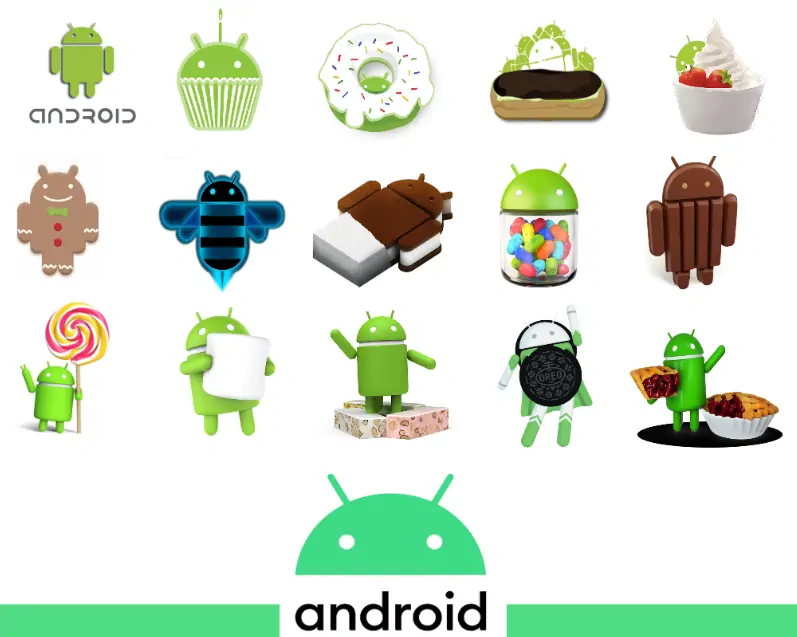Google’s Android has recently marked its 11th year, since its inception in the digital coup. The smartphones are the devices, responsible for running the lives and business at bolt’s speed. The advent of technology has raised the demand to operate the functionalities via the means of automation.
The operating system installed on smartphones is a fascinating name, driving the technology at the doorstep of every living being through the palm held device. Apple’s IOS and Google’s Android are prevailed names, ruling the era with further negligible competition.
The Brief Introduction of Android:
Android is the operating system, exclusively designed for running the applications on touch screen smartphones and devices. The android development company works in the mainframe of integration on the Linux Kernel and other open-source software.
In the year 2003, the team of Andy Rubin, Nick Sears, Rich Miner and Chris White, set the roots of Android Inc. in the city of California. The motive was to design the advance OS for the digital camera, working smartly by the recognition of location and commendations.
With Google’s acquisition in the year 2005, the Rubin and team stayed for working over the kernel shell with the milestone to develop the smart devices for the state-of-the-art.
Features of Android- The Operating System:
Android is the pre-installed operating system working on the range of smartphones nowadays. The call for such wide reach is the prime cause of its offering fantastic features like;
- Easily accessible and affordable in range.
- Works on the technology of Android source code, also known as ‘Android Open Source Project (AOSP)’ issued under ‘Apache license’.
- It provides Multi-Task preface.
- It administers the Multi-Touch interface.
- It updates over the air.
Link to Sweet Codes Logo with Android Release:
While the most release of Android belongs to the name of Candy or desert-style code. It is reported that until Feb 2009, the release of Android 1.1 doesn’t curtail the public code name. However, the internal name was reported as ‘Petit Four’ under the development process.
A few months later, in April 2009, the Android 1.5 OS got its first public code name: ‘Cupcake’. The series of OS dedicated over the names of sweet continues until the last Android release, ‘Android 9.0 Pie’.
The release of Android 4.4 KitKat offers its first official statement in the context. The clouts delivered the statement, “Since these devices make our life sweet thus, each Android release is named after sweet desert”.
The Journey of Android OS- From Dawn to the State-of-the-Art:
Obviously, Android has embarked the long journey in the field of development. The Android development company belonging to the core is driving the gears for development and updates in all these period.
Let’s explore more, with the detailed discussed journey propagating the carriage of development in the domain of digitalization and accessibility in each sole hand.
- Android 1.0 (2008):
The first step of smartphones was led with the release of Android 1.0. The technology was not as mind-blowing as of today’s generation features.
But the notch drew feature of notification blew the mind of customers and other source developers. Apart from this, the accessibility to use the home screen widget swipes the influence of IOS.
The HTC Dream or T-Mobile G1 was the first very first known smartphone announced in the market.
The Play Store feature known as Market, at the moment centralized the operations of applications.
- Android 1.5 Cupcake (2009):
The release of Cupcake changed the interface by bringing the On-screen keyboard. This version further initiates the trends of names.
The Android 1.5 Cupcakes allows the manufacturing and implementation of third-party applications. The android development company working for the soul of their business executes their steps through software development kit (SDK).
- Android 1.6 Donut (2009):
The Donut set the market for free and paid apps. It further burgeons the user-friendly experience with the support of different sizes of display.
The Donut creates the Pandora box of suggestions through Quick Search Bar for accessing the log, messages and local files in less than the no time.
- Android 2.0 Eclairs (2009):
The Eclairs were revamped set of existing OS till then. The Google Maps Navigations was the key development that still marks its presence in today’s updates.
The Mobile Internet was the call of Android 2.0, making it easily accessible for watching videos and photos on internet belvedere. The Lock Screen was one of the integrating steps in the field of personalization.
- Android 2.2 Froyo (2010):
The Nexus One was the first Nexus mobile phone inhibiting the Froyo OS. Froyo aimed to redefine the customer’s experience by redesigning home screen panels.
The mobile Hot-Spot feature was firstly coined by Froyo. It further ostentatious its revamped Gallery app. Also, it brings out the security keys to the mobile by PIN Lock system.
- Android 2.3 Gingerbread (2010):
Samsung’s Galaxy S was derived from Gingerbread marking the huge success in the market. The update brought the feature of improved multi-touch support.
This android further brought the trend of front-faced cameras. Wonder what selfie lovers had done without the implementation in the field?
- Android 3.0 Honeycomb (2011):
The Honeycomb marked the trends of mobile screen appearance. The control buttons of home and back are subjugated by virtual buttons on the same display of the screen.
It further allows the movement of the app over the home screen for customization purpose.
- Android 4.0 Ice Cream Sandwich (2011):
The Nexus S was the derived phone famous for operating on the OS. It tweaks the virtual buttons in screens.
The blue highlight was the refined interface of OS. It further allows studying the chart of Data Usage Analysis.
- Android 4.1 Jelly Bean (2012):
The Jelly Bean is considered as one of the revolutionized updates till the date. Google brought the apps on a single platform consist of the drives of Gmail, Calendar, Weather Reports.
It allows using Google with just the swipe on the screen.
- Android 4.4 KitKat (2012):
The update of OS redesigned the outlook of the screen. It revamped the colours of the screen with the launch of Stock apps.
It also brought the feature of ‘OK Google’ for carrying the commands on the go.
- Android 5.0 Lollipop (2014):
The update boasts the Time-Compilation. The notification upgrades were targeted in the updates.
The Lollipop brought the trend of Android TV, still existing at certain belvederes.
- Android 6.0 Marshmallow (2015):
The Marshmallow revamped the outlook of menu bar along with control of the volume for device, call and alarms.
The Fingerprint sensors were accepted as a trend with this update only.
- Android 7.0 Nougat (2016):
The Nougat brought the major change in the evolution of Android over all these years. The Google Assistant is brought in scenario replacing the mode of Google for quick actions.
Further, it allows switching the screens of the app, without cancelling the prior. It brings down the feature of split screens.
- Android 8.0 Oreo (2017):
It escalates the feature of Multi-Tasking. It further gave the authority to on and off the notification panels for the applications.
It gave the features of enabled Wi-Fi, smart keyboard and many others.
- Android 9.0 Pie (2018):
The update to Pie brought major visual changes. This update vanishes the long retained three virtual buttons with a single touch button.
It allows Multi-Tasking along with the analysis of battery drain. It further allows taking ‘App Actions’ straight from the menu drawer.
- Android 10 (2019):
The version marked the vision of change for Google. Noticing, the trend following the code name of desert vanishes out with the announcement of the version.
It prevailed the screen in dark mode. Android 10 absconded the button on the device by the mode of running through the gestures. It further adores with the customization of the screen.
In Conclusion:
The android development company working for core vitals bolsters in enhancing the experience of the user with each release of Android Version.
These were the brief coaster regarding the journey of Android- The Operating System.









